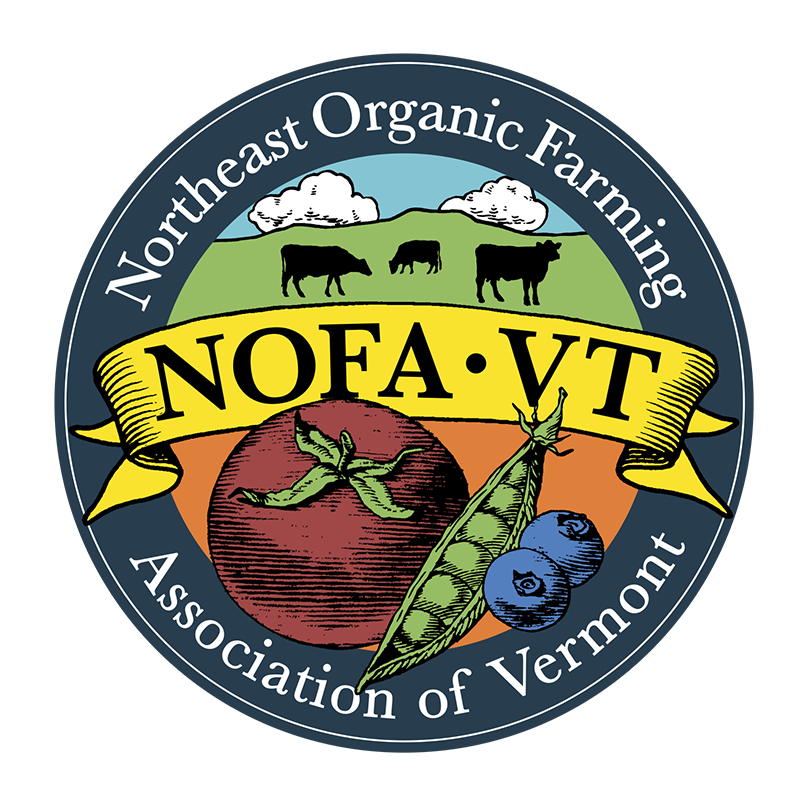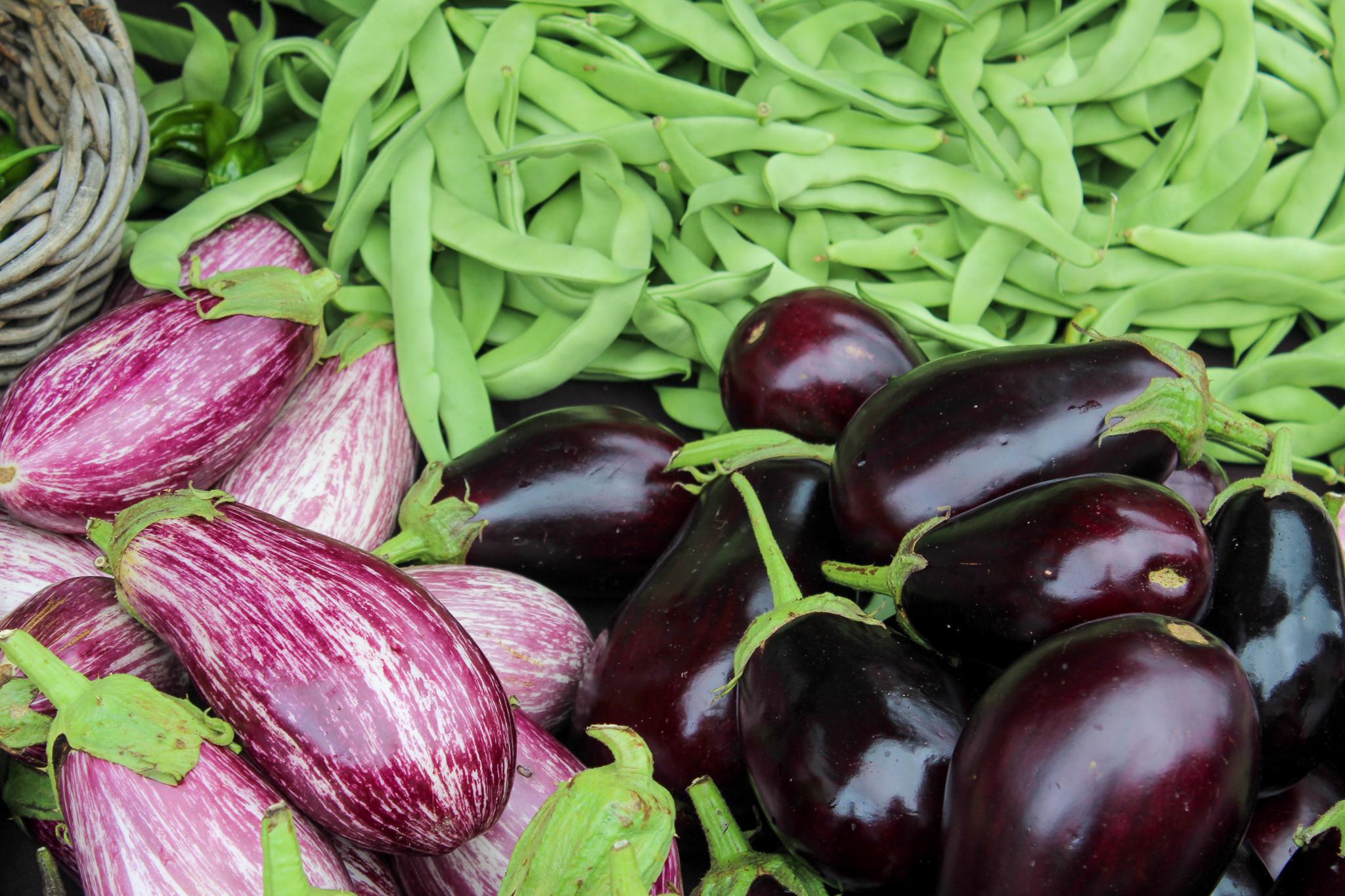July 2024 marked the one-year anniversary of 2023’s historic floods while simultaneously calling us to respond to yet another significant flooding event impacting farmers and communities across the state. Like last year’s “historic” flooding, this year’s extreme weather came at a time when farms had invested heavily in seed, labor, etc., and were just starting to recoup these investments with their harvests. While we are grateful the damage was less widespread than last year, we recognize this is little consolation to the many farmers who faced devastating losses to their infrastructure, crops, or livestock in this summer’s climate-change-fueled extreme weather events.
While our farmers will rise (again), we recognize the need for durable changes that address the reality of the unfolding climate crisis. Farmers do crucial work tending ecosystems and producing food, yet are faced with challenging market dynamics, slim margins, and weak structural support despite the necessary role they serve. Additionally, organic farmers are already on the frontlines of the climate crisis, contending with its brutal impacts while simultaneously mitigating them through their farming practices. Organic farming practices create more erosion-resistant soil, shore up riverbanks through treed buffers, enhance biodiversity, and sequester atmospheric carbon to name just a few of the benefits.
Support for affected farms is crucial not only for their short-term recovery but also for building a more just, sustainable food system in the long term. Throughout these extreme weather events, we have seen the power of community coming together – people donating to crowd fundraisers, volunteers cleaning up flooded fields, and farmers helping farmers, to name a few examples. We may not immediately change the extreme weather, but we can come together to support each other and change policies to make sure our farms and communities are more resilient.
Farmers Helping Farmers
As we reflect on the impact of these flooding events, we continue to be inspired by the way that our community pulls together. Growers in southern Vermont provided a poignant example, mobilizing to help those hit hard in Burlington’s Intervale and the surrounding area in the wake of the 2024 flooding. Coordinated through the Vermont Vegetable & Berry Growers Association’s listserv and its manager, Vern Grubinger, three farms executed the delivery of tens of thousands of vegetable and herb starts to fellow farmers during a time of need.
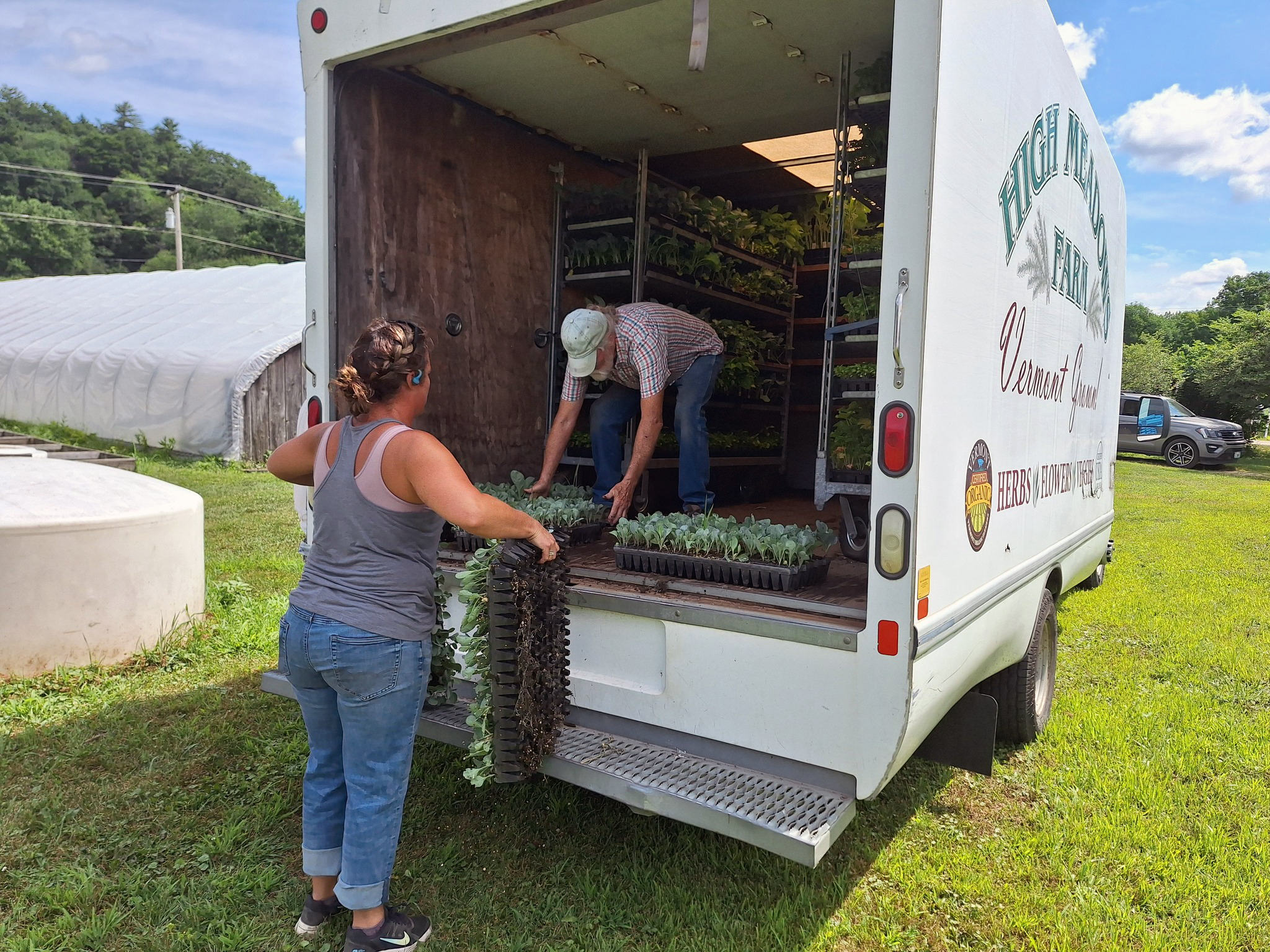
The Harlows of Harlow Farm in Westminster donated organic vegetable seedlings in trays ready to plant, Jack and Karen Manix of Walker Farm in Dummerston donated hundreds of retail-ready trays along with potted vegetables and flowers, Howard Prussack of High Meadows Farms in Putney provided the driver and truck for delivery, and Andy Jones of Intervale Community Farm in Burlington coordinated the distribution of these donated plants to flooded farms, including Diggers' Mirth Collective Farm, Pitchfork Farm, Sugarsnap, New Farms for New Americans, Jericho Settlers Farm, and beyond. Andrew Knafel of Clear Brook Farm in Shaftsbury also offered a separate donation of many trays of cabbage seedlings. “This was a huge help to us! Intervale Community Farm was able to plant around a half acre of fall cabbages and romaine lettuce,” said Andy Jones.
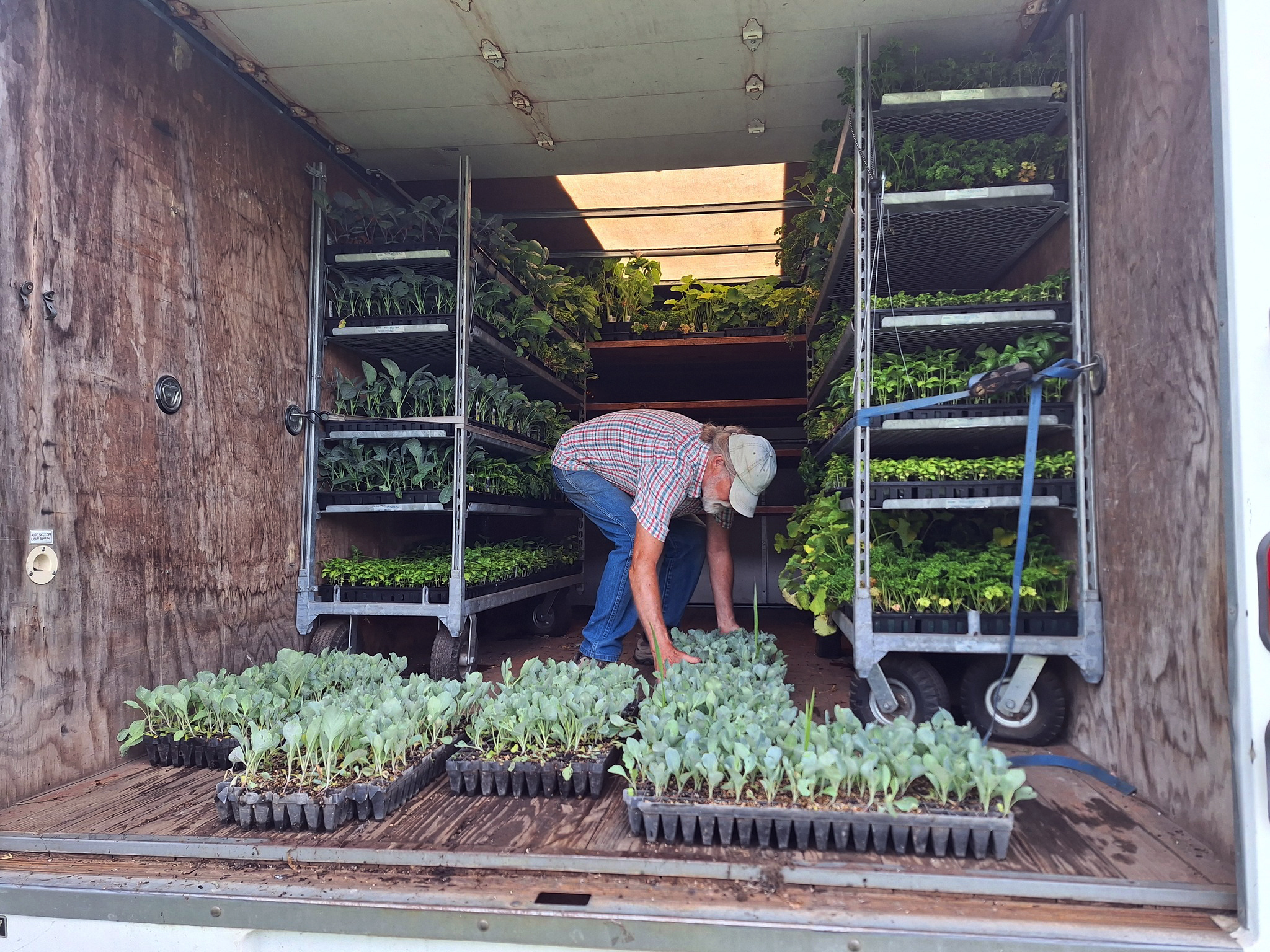
Howard shared that his farm needed to make deliveries in Brattleboro, so with an empty truck returning north, he planned extra stops at Walker Farm and Harlow Farms to fill the truck with donated veggie starts. There was help at each farm to load tray after tray until the truck was fully stocked - not one more tray would have fit. Howard estimates the total to be somewhere in the ballpark of 15,000 seedlings. At that point in July, farms in the southern part of the state had largely been spared flooding and saturated fields. However, the day that we spoke to Howard in early August, he had just experienced a “freak hail thunderstorm” the day prior, reporting at least three inches of precipitation in ten minutes, causing downed trees and hail damage to the crops and greenhouse.
“It’s weird times. We don’t know what to expect, but farmers always try to help each other out. We help them and then we don't know what we're going to need. When it happens, it’s like a hammer. We're resilient farmers, but these weather events are wearing and the financial part is hard to swallow,” says Howard.
Evan Harlow says he’s still waiting to see if it turns out to be a decent year, but knows that farms in the northern part of the state got hit a lot harder. The Harlows felt particularly bad for the farms that got wiped out two years in a row and were happy to donate extra transplants. They remain hopeful that the fall will bring good weather, drying out some of the August rain to produce a good winter squash crop, among other things.
Farmer-to-farmer donations of vegetables were also helpful in fulfilling CSA shares this summer. Jack Manix said that he feels fortunate that Walker Farm is having a really good year and they have been happy to share their farm’s abundance with those impacted by flooding. He feels that Vermont organic farmers have a strong network and feels it’s important to help when there are opportunities to strengthen the weaker spots in the network. They happened to have a good load of seedlings that they were happy to donate in July and a bumper crop of peppers and eggplants in August that they donated to Joe’s Brook Farm to round out their CSA.
Asking the Hard Questions
One farm that was hit hard two years in a row is Jericho Settlers Farm. In July 2023, the Winooski River rose rapidly, completely inundating the farm’s 35 acres in Richmond, and destroying their carrot, beet, and potato crops. As Jericho Settlers Farm’s owner, Christa Alexander put it, “Those three crops alone were worth a couple hundred thousand dollars for us.” The rainy summer weather didn’t relent and the farm saw increased disease and pest pressure in the fields that they managed to replant. It all added up to a historically poor harvest that left Jericho Settlers Farm without their usual root crops to sell in the less productive winter months. As a result, they had to downsize their farm crew for the winter and came into 2024 with a significant loss in expected revenue.
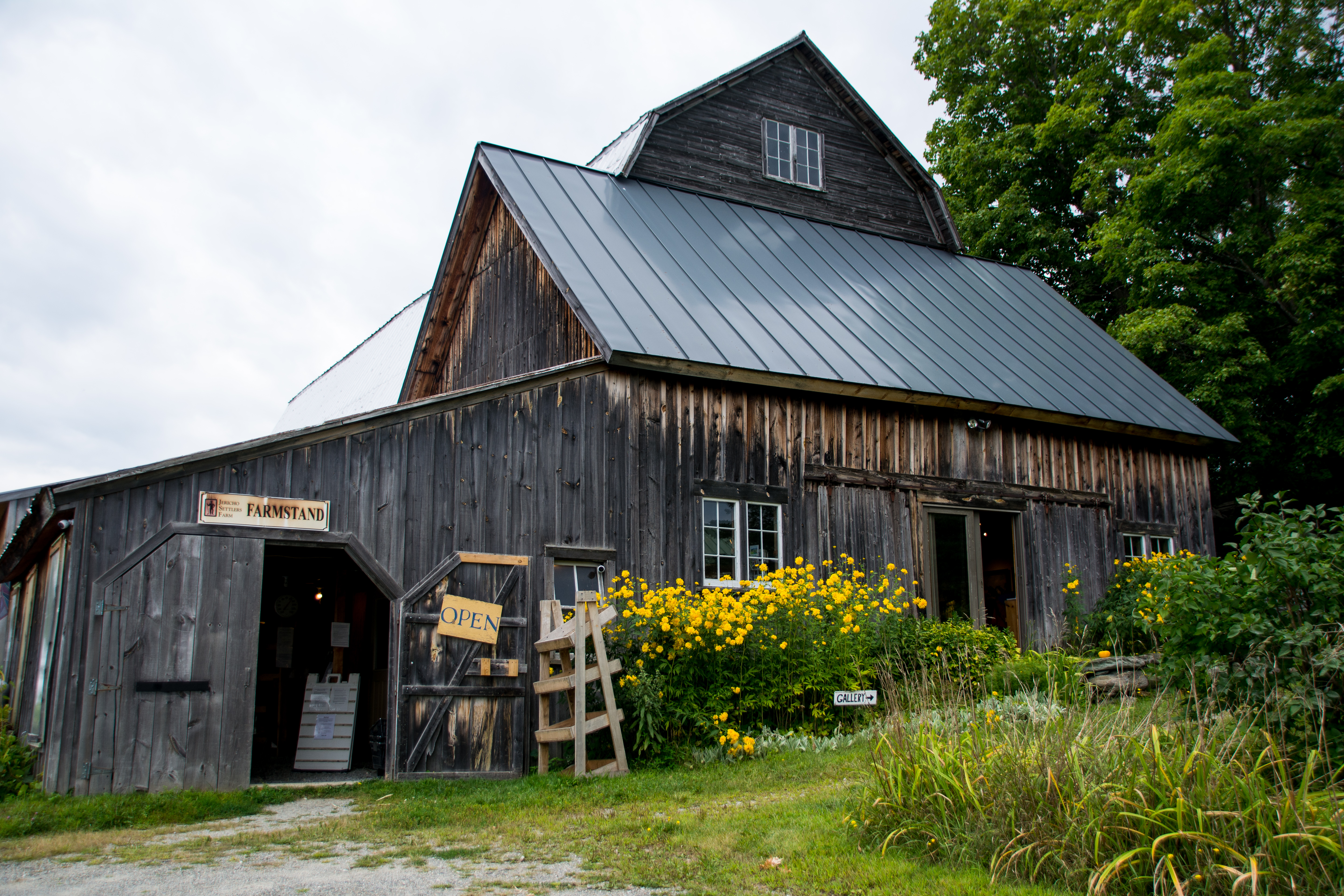
Unfortunately, more flooding in 2024 means that this year is proving to be just as difficult for Jericho Settlers Farm. Exactly one year after the 2023 flood, the waters of the Winooski River once again overflowed the banks causing Jericho Settlers Farm’s summer root crop of beets, carrots, and potatoes to be flooded and lost. The back-to-back floods have had a huge impact on the business and Jericho Settlers Farm is not yet in the clear. “We’re just hoping to get to November with no major issues,” Christa says. “Everything will depend on the fall harvest.”
Like so many other farms in Vermont last year, Jericho Settlers Farm accessed state and private relief funds to help bridge the gap. “Between the State’s Business Emergency Gap Assistance Program (BEGAP), NOFA-VT’s Farmer Emergency Fund, Vermont Community Foundation funds, and support from our CSA members and customers, we were able to replace about 30% of our total loss.” This year, relief funds from the state are still in the works, although Jericho Settlers Farm has been able to access assistance through the NOFA-VT Farmer Emergency Fund.
Looking to the future, Christa sees risk diversification as the key to the farm’s long-term resilience. In addition to their Richmond fields, they also have farmland at their home farm in Jericho: “We do have resilience in terms of the different locations; that helps a lot,” Christa says. Moving forward, the important work is to make thoughtful choices about which crops are planted in each location and to identify the crops that make the most sense for the farm to focus its efforts on. “We want to focus on the crops that give us the most bang for our buck in a given year,” shared Christa. Even in light of back-to-back six-figure losses, she is hopeful for the future and feels positive about farming’s role in Vermont’s working landscape: “We could downsize the farm,” which could minimize the risks, “but that would get away from what we want to do, which is to feed the community. Philosophically, I think growing food in our floodplains, with good conservation practices in place, is an appropriate thing to do. It's much easier to recover food crops from flooding than villages.”
The Hopeful Path Forward
The past two years' flooding events have brought the reality of climate change in Vermont into stark focus. Challenging and complex conversations are unfolding in communities around the state about farming in floodplains and climate adaptation more broadly, all in the context of an ongoing housing crisis and shrinking access to farmland. Through the complexity, two things remain clear: Farming in Vermont is critical to the path to true food security for our state and Vermonters know how to pull together when we need to.
In the coming months, NOFA-VT will convene with farmers and community members around the state to share ideas and get organized around solutions that will help make our farms and communities better prepared in the face of climate change, while ensuring everyone has access to nourishing, locally produced food. Together, we will bring these solutions to our elected leaders and work with them to secure public investment and policy changes that support food security, emergency preparedness, and long-term climate resilience.
At this critical moment, we're calling on policymakers and all Vermonters to recognize that our farms are critical to our future. Our farmers keep us fed, keep our rural economies healthy and functioning, care for the land, and protect biodiversity. We envision a future where anyone who wants to farm can do so, where farmers are fully supported to continue doing their important work, and where every Vermonter has the food they need. Our collective action will get us there.
